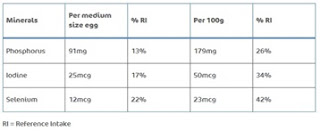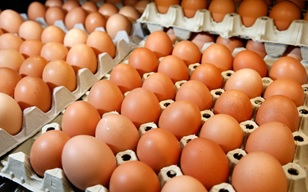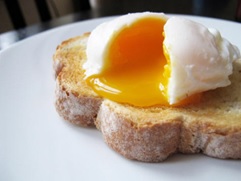Question:
Do you know the difference between a
FRITTATA and a TORTILLA?
Answer:
No – I didn’t – well I wasn’t 100%
sure until now
The
basic and vital difference is in the eggs and how they are finished in the
dish. In both, the eggs start by
covering the other ingredients in the frying pan, on the cooker/hob. To make tortilla, the whole thing is flipped
and browned to finish in the same pan (its traditionally then left to cool
before being sliced and served), whereas the frittata is finished by placing
the pan with all its contents including the eggs into the oven to cook through
and the for the top to crisp up. The
frittata can then be served hot (or sometimes cold).
Using
the same ingredients you do therefore get a different finish and different
taste, however the nutritional benefits of one over the other are
negligible. What you serve the frittata
or the tortilla with is what may make the difference, as well as of course the
ingredients you thrown in, in the first place.
Either way though, this is a great lunchtime filler upper. It’s very
quick and easy to prepare and cook and great for using up any leftovers.
In my frittata:
INGREDIENTS:
- 4 x small new potatoes (these were already cooked as left from last nights dinner)
- 3 x large eggs (you may want to use more if using more than 4 potatoes or if you have lots of other extra ingredients to cook up)
- A handful of cherry tomatoes (I’d say there were approx. 6-7 of them, sliced in half only)
- ½ an orange pepper (diced into chunks)
- A large handful of fresh baby spinach (basically it was the remainder of the bag – probably 120g)
- ¼ mozzarella ball (that’s about 2-3 medium slices cut into chunks and melted in with the eggs)
- Cheddar cheese (a small handful once grated)
- Pinch – salt, pepper, dried mixed herbs
- 1 x tbsp. oil / butter to frying pan to start
CALORIES AND NUTRIENTS:
Total calories for the frittata using
ingredients as above = 600
This
of course may change if you use more potatoes, more eggs, or of course more
leftovers and other ingredients – REMEMBER – this serves 2 though so you will only be eating half those calories
each. Calories per serving = 300
Carbohydrate = 25g
Protein = 30-35g
Fat = 40g
Fibre = 8g
VITAMINS AND MINERALS:
Beta Carotene, or vitamin A is predominant in this dish as can be found in the cherry
toms, pepper, spinach and eggs. This is
great for bone health, teeth, skin and for eye health. Vitamin
C comes a close 2nd on the list of good stuff in this dish. Potatoes, spinach and again the pepper all
have a high vitamin C content. Other vitamins come from the spinach in the way
of D, B6 and B12. From the eggs – vit D, E, B12 and folate.
Potatoes
= potassium
Cheese =
calcium
Spinach
= magnesium (and of course iron – remember Popeye)
This
is not the exhaustive list – you can also find iodine (great for thyroid function), selenium (an antioxidant), phosphorus
(bone health) and zinc (fighting
infections) in this combo!
Also as
we are going on to talk about eggs in more details – here are the vitamins and
minerals found in eggs alone – (as per www.egginfo.co.uk)
Vitamins and minerals explained (by www.egginfo.co.uk)
|
Nutrient
|
Function
|
|
Vitamin
A
|
Vitamin
A contributes to the maintenance of normal skin and the normal function of
the immune system. It also contributes to normal vision.
|
|
Vitamin
D
|
Vitamin
D contributes to the maintenance of normal bones and teeth, the absorption
and use of calcium and phosphorus in the body, to normal muscle function, and
to the maintenance of normal immune system function.
|
|
Vitamin
B12
|
Vitamin
B12 contributes to the formation of red blood cells and normal energy
metabolism. It also contributes to the normal function of the immune and
nervous systems.
|
|
Vitamin
B2 (riboflavin)
|
Riboflavin
contributes to normal energy metabolism and to normal red blood cell
development, vision, and nervous system function.
|
|
Folate
|
Folate
contributes to the division of cells and therefore to tissue growth during
pregnancy. It also contributes to normal blood formation and normal
functioning of the immune system.
|
|
Biotin
|
Biotin
contributes to normal energy metabolism and to the maintenance of normal
skin, hair, and nervous system function.
|
|
Pantothenic
acid
|
Pantothenic
acid contributes to normal energy metabolism, mental performance, and to
making vitamin D and some hormones.
|
|
Choline
|
Choline
contributes to normal fat metabolism and liver function.
|
|
Phosphorus
|
Phosphorus
contributes to the maintenance of normal bones and teeth. It also
contributes to the normal function of cell membranes and to normal energy metabolism.
|
|
Iodine
|
Iodine
contributes to the production of thyroid hormones, the normal functioning of
the thyroid gland, and to normal energy metabolism. It also contributes
to the maintenance of normal skin and nervous system function.
|
|
Selenium
|
Selenium
contributes to the protection of cells against oxidative damage. It also
contributes to normal immune system and thyroid gland function, and to the
maintenance of normal hair and nails.
|
So
now you have the nutritional low down I want to talk more about EGGS. As this dish (frittata, tortilla, quiche,
flan or simply the great British omelette) are all common egg based dishes – 1) Are they good for you? 2) How many eggs
should we really be eating? 3) What’s the deal with eggs and cholesterol? 4) And
the deal with eggs and fat?
In
a nutshell (or egg shell?) until now the traditional view has been that eggs
(and mostly their yolks) contain cholesterol and saturated fats. These are 2 things we do not want too much of
in our diet or in our bodies. The reason
being, can be found along with a great description of LDL and HDL cholesterol
here: http://www.egginfo.co.uk/eggs-and-health/eggs-and-cholesterol/what-is-cholesterol
It’s
therefore been recommended for years that within a healthy diet we limit our
egg intake to approx. 3-4 eggs per week.
This way we do not take on too much cholesterol or saturated fat to clog
our blood transport systems and we therefore do no damage or encourage any risk
to our heart. Eggs were seen really as a
“treat” or too many were noted as bad for you.
You
may be surprised then to learn that this year – 2015 – that advice has
changed. The traditional advice to limit
your egg consumption has been lifted by the department of health in the
UK. This is due to recent studies
showing that:
- Early research found dietary cholesterol (found in egg yolks) contributed to raised blood cholesterol.
- Current research has discovered for most healthy people, this is a very slight effect
- Saturated fatty acids are much more harmful and add greatly to LDL cholesterol
- Eggs are actually low in sat fats, so not in this category
- Studies since the 1900s and into the 2000s (inc http://www.ncbi.nlm.nih.gov/pubmed/11111098 , http://onlinelibrary.wiley.com/doi/10.1111/j.1467-3010.2006.00543.x/abstract , http://www.ingentaconnect.com/content/bsc/nbu/2009/00000034/00000001/art00008) found no independent relationship between dietary cholesterol and egg consumption
- In fact they showed the effects of cholesterol rich food on blood cholesterol were clinically insignificant
- The more recent studies have looked at the effects of cholesterol and saturated fat SEPARATELY, as opposed to earlier studies that drew conclusions using foods both high in cholesterol and sat fats
- As we now know, it’s the saturated fats (and these days trans fats etc too!) that have bad links, bad effects and contribute badly to our risk of heart disease. BUT – that’s another can of worms altogether to be opened another day
While
we are looking at eggs now in a favorable light, let me add that they really
are a fantastic protein source as they contain all 9 essential amino acids –
these are the basic building blocks for proteins. Also with all this bad talk of cholesterol lets
remember cholesterol is essential for the production of sex hormones, cortisol,
vitamin D and actually great for the skin!
NOW
– as long as you’re not too bored of the science – to conclude the egg limits
have been lifted and as long as you are sticking to a reasonably healthy diet
you can eat eggs every day. The
questions now are more concerned with how we store our eggs to ensure they are
safe so;
STORAGE 1,2 3:
1)
Check
the best before date – this should be printed on all shop bought eggs as a
legal requirement
2)
Store
at a constant temperature of below 20°C – ie best in the fridge, taking them
out approx. 30mins before cooking
3)
Remember
egg shells are porous, so store away from meat and strong smelling foods
There
is so much more we could go into – amino acids, eggs as protein, how to cook
your eggs the healthiest way, more egg recipes….. but we’ve gone far enough for
today so with that I think we shall end this eggcelent blog!
**If
you are of ill health, a pregnant woman or a child, please be advised egg
consumption guidelines may differ**
**Please
remember this is nutritional advice ONLY (as is all other information and
advice contained in this blog and the websites and social media related to it) –
none of the info or advice is intended to override anything your GP or health
professional tells you**
For more
info please email me here or at info@nitakothari.com
You can
also get involved by:
Liking our
facebook page
Tweeting
us @nononsensenita and following our twitter feed
Following
our instagram pics
Showing
some pinterest
Visiting the website
And of
course Google+ this and find/follow our Google+ profile nononsensenita











No comments:
Post a Comment